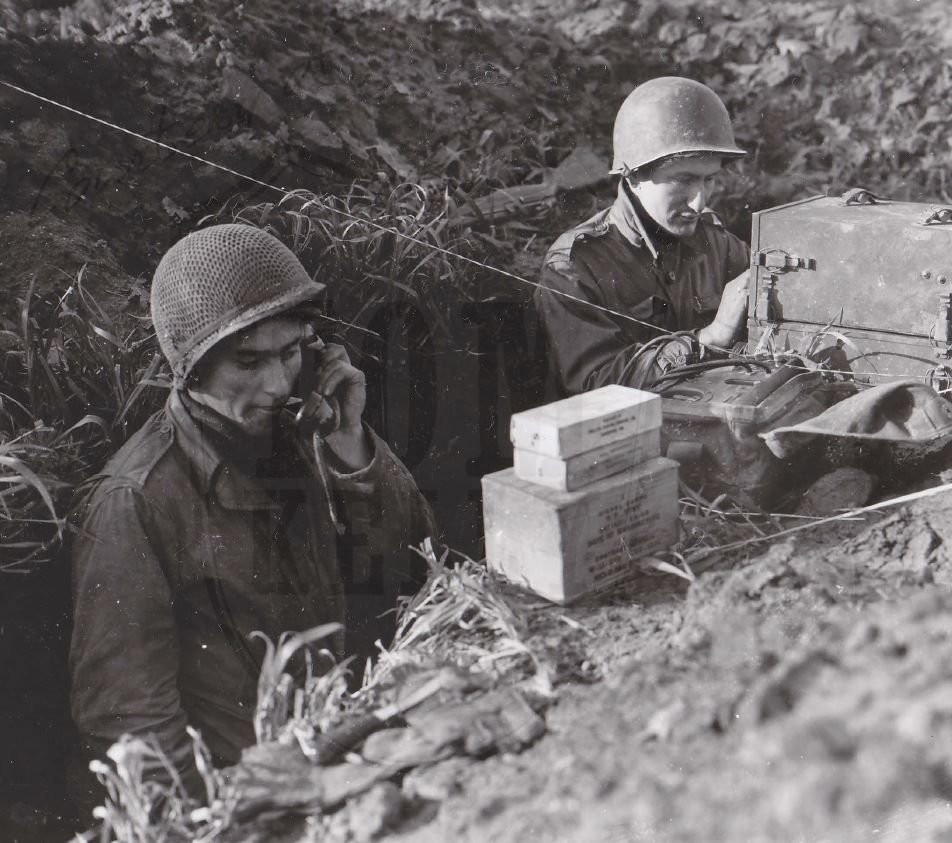6th Marine Division veteran Joseph Lanciotti believed that even those who witnessed war could not really describe it exactly as it was, "they can only try, and fail" – but "if you shared a foxhole during combat for one night, words would not be necessary to explain anything to you." [1]
Central to the World War II combat soldier's experience was their foxhole, a hastily constructed shelter scraped from the ground that offered some protection from enemy observation and fire and, to a lesser extent, the weather.
100th Infantry Division rifleman Beauford J. George, Jr., attempted to describe the conditions he was enduring in his foxhole in Northeastern France to his high school English teacher in a letter he wrote on January 15, 1945. In the letter George advised his teacher to prescribe the following course if "any of your seniors mention aching to get into the Army":
"Get a friend to light dynamite and toss it around the aspirant, let him dig, while dodging high explosives, a hole 8 ' x 4' x 4' with a hand shovel, take a hand axe and chop a log cover, pile dirt over that, and then get in with another fellow. Then either pour in water or snow, give him a couple of wet or frosty blankets, and let him spend a couple days in it, standing 1 1/2 hours of guard and then trying to rest the next hour and a half. If he's still eager, snipe at him a little. Then send him to the Navy recruiting office." [2]

84th Infantry Division machine gunner Emmett T. Lang recommended a similar method of simulation in his memoirs:
"What is it like to sit in a foxhole amidst all this death and destruction? It wasn't very nice! You could get a taste of it by digging a foxhole in your yard in late November, have someone spray you and the area around your hole with water 10 hours a day while someone else throws two-inch cherry bombs at your hole every five minutes. Stay in that hole four days, sleeping two hours, and watching two hours. At the end of the time you would have a vague idea of what combat was like." [3]
While neither method can come close to replicating the actual experience of an infantryman in the Second World War, they provide a framework for those adventurous enough to try.
Footnotes
[1] Joseph Lanciotti, The Timid Marine: Surrender to Combat Fatigue, (Lincoln, NE : iUniverse, 2005), xii.
[2] Beauford J. George, Jr., "George, Beauford J., Jr., Letters, 1944-1946," World War II, Letters, 1940-1946, Folders 1025-1028, The State Historical Society of Missouri.
[3] Emmett T. Lang, Always a Soldier but Never G.I., (Denver : Outskirts Press, 2011), 127.